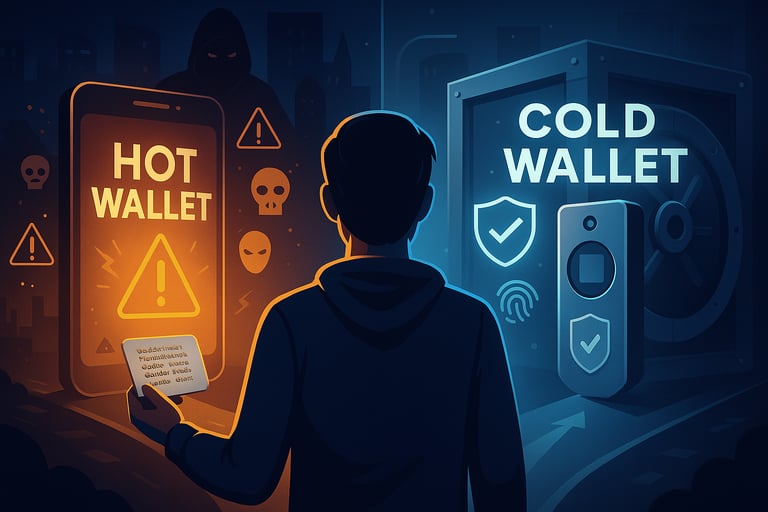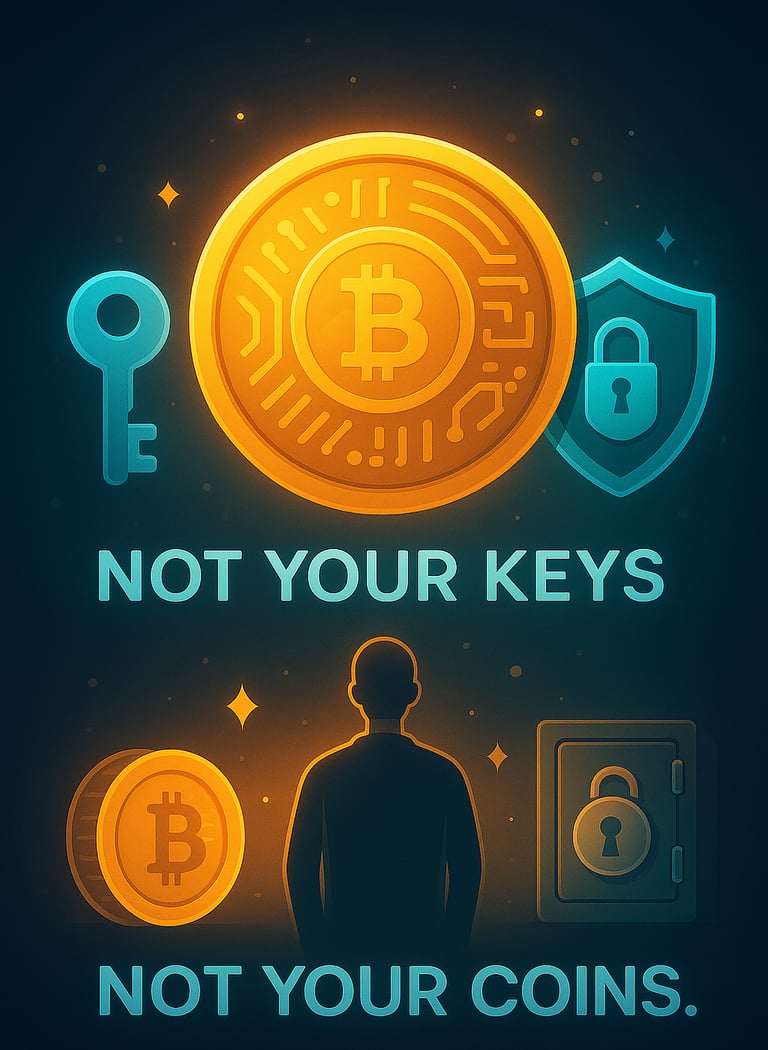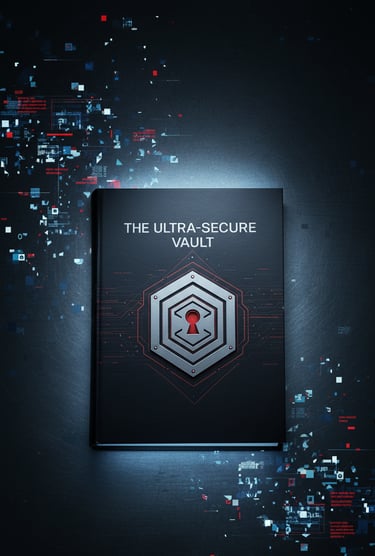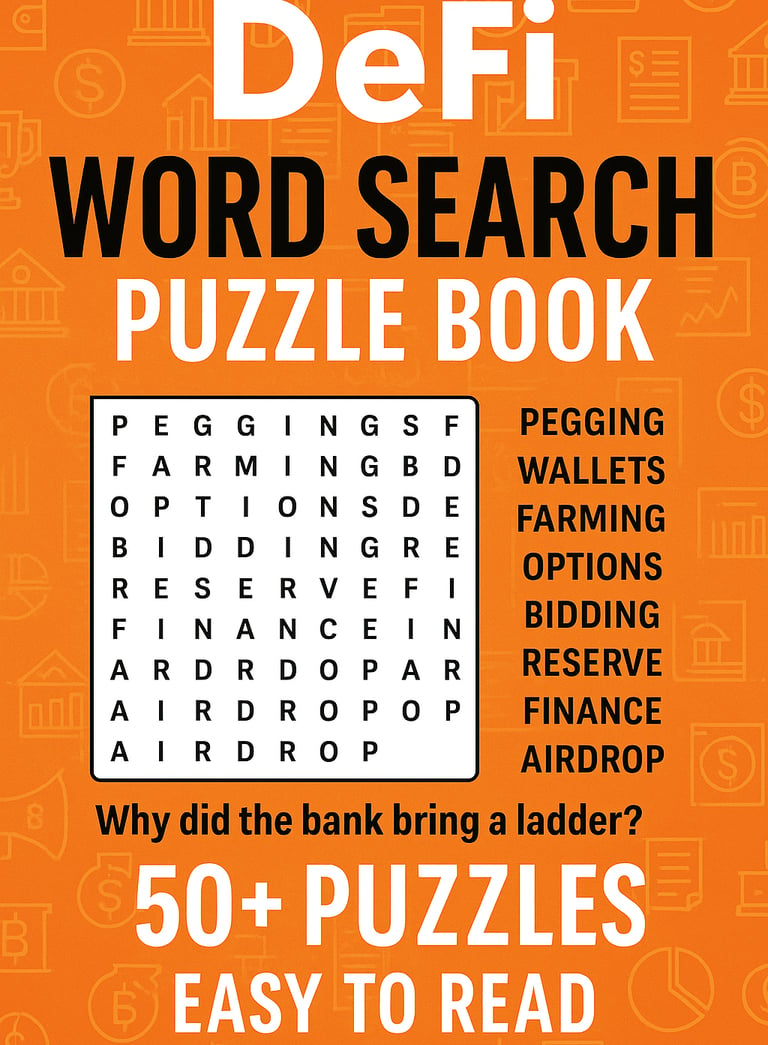The Ultimate Crypto Wallet Guide 2025: Hot, Cold & Security Tips
Explore our comprehensive crypto wallet guide 2025, hot vs cold, custodial vs non-custodial, wallet security, seed phrase safety, and advanced tech. Learn how to protect your crypto effectively.
Chain Editorial Team
6/23/20259 min read
💭 Imagine This…
It’s late at night. You’re relaxing at home after a small crypto win, scrolling your phone, watching your wallet balance tick up. Suddenly, you get a push notification: “Suspicious login detected. Unknown device. Brazil.”
Your heart skips.
You fumble for your Ledger, praying your cold wallet is safe, because your hot wallet, the one you used on that new DeFi app, is wide open. In the next second, another notification: withdrawal request pending.
Do you have your seed phrase?
Is it on paper, or sitting in a screenshot somewhere in your cloud backups, waiting for a breach?
What if the threat isn’t digital at all? Imagine waking up to a ski-masked stranger in your kitchen demanding “the codes.”
This isn’t just a sci-fi nightmare. It’s 2025, and securing your crypto isn’t just about beating the hackers online, it’s about outsmarting real-world attackers, too.
That’s why understanding crypto wallets, hot, cold, custodial, non-custodial, isn’t optional.
It’s survival.


⚡ FlashChain: Your 15s Brief
Hot Wallets = Speed, Cold Wallets = Safety:
Hot wallets (like MetaMask, Trust Wallet) connect to the internet for instant access, but are exposed to hacks and malware. Cold wallets (Ledger, Trezor) stay offline, acting as your crypto vault.Custodial vs. Non-Custodial:
Custodial wallets (held by exchanges like Binance) are easy, but you don’t control your keys, meaning your crypto can be frozen, hacked, or lost if the platform collapses. Non-custodial wallets = you own your keys, you own your crypto.Seed Phrase Is Everything:
Lose your seed phrase (12–24 words) and you lose your crypto forever. Never store it online. Never share it. Ever.Physical Danger Is Real:
In 2025, threats aren’t just digital. Criminals target wealthy crypto holders for “wrench attacks.” Your security setup needs to protect you online and IRL.Hybrid Wallet Strategy Wins:
Use hot wallets for spending and DeFi. Use cold wallets for savings. Use decoy wallets or multisig for extra safety.Top Wallets (2025):
MetaMask, Trust Wallet, Ledger, Trezor, Exodus, Zengo, Sparrow, BlueWallet, Crypto.com Onchain, Bitkey.
💡 Let’s Dive In
What Is a Crypto Wallet?
Forget the leather billfold, your crypto wallet is pure software (or sometimes hardware), but it’s way more than a simple bank app.
It doesn’t actually “hold” your coins; instead, it holds the digital keys proving you own them.
Imagine the wallet as your high-security keychain to a vault that lives on the blockchain. If you lose your keys, you lose access, no support hotline, no refunds, no mercy.
How Does a Crypto Wallet Work in Real Life?
🧠 Picture this
Your public key is like your home address share it freely so people can send you mail (crypto).
Your private key? That’s the house key and alarm code. Anyone who gets it owns your house (and everything in it).
When you make a transaction, you’re proving, mathematically, that you control the keys to your vault.
Wallets keep your keys secure, let you sign transactions, and interact with decentralized apps (dApps) across the Web3 universe.
Your digital assets are under constant threat. Secure them with the ultimate offline solution.
Why Keys Matter: Private Key vs. Public Key
Private Key:
A super-long, unique string of letters and numbers. Think of it as your PIN, password, and signature, all in one.
Lose it, and you lose everything. Share it, and a hacker just inherited your wealth.Public Key:
This is the address you share, safe to give out, but useless without the private key.
The Seed Phrase: Your Master Backup
Instead of storing a dozen complicated keys, wallets generate a seed phrase, a list of 12 or 24 ordinary words.
If your phone is stolen or your laptop dies, you can restore all your wallets with these words.
But if you lose your seed phrase, or worse, someone else finds it, it’s game over.
Real-World Example:
A New York investor lost $2 million in Bitcoin after storing his seed phrase on a Google Doc that got hacked.
A London trader kept his phrase in a safe deposit box and survived a ransomware attack.
Lesson: Go old-school: write it on paper, stash it somewhere safe. Consider fireproof metal backups if you’re serious.
Hot Wallets: Convenience, with a Catch
What They Are:
Software wallets connected to the internet.
Examples: MetaMask, Trust Wallet, Exodus, Coinbase Wallet.When to Use:
For daily trading, paying for NFTs, DeFi, or quick transfers.Risks:
Susceptible to phishing, malware, SIM swaps, and browser exploits. If your device is compromised, so is your wallet.Best Practices:
Always download from official sources.
Enable 2FA and biometric security.
Don’t keep life-changing sums here.
🧠 Picture this
Hot wallets are like carrying cash in your pocket at a busy market, fast, but risky if you’re not careful.
Cold Wallets: Your Crypto Vault
What They Are:
Devices or paper that store your keys offline, no internet connection means no remote hacks.
Examples: Ledger, Trezor, Bitkey (hardware); paper wallets; metal wallets.When to Use:
For long-term savings, inheritance planning, or holding serious value.Risks:
Lose the device or phrase, and it’s gone. Hardware wallets can be damaged, lost, or destroyed. Physical attacks (“wrench attacks”) are a real risk if you’re public about your wealth.Best Practices:
Store your backup phrase in multiple locations (never digital).
Use a fireproof safe or metal plate.
Don’t brag online about your holdings.
🧠 Picture this:
Cold wallets are your safety deposit box at the world’s most paranoid bank, hard to access, but almost impossible for thieves to reach (Unless they break into your home).
Custodial vs. Non-Custodial: Who Holds the Keys?
Custodial Wallets:
Third-party holds your keys (think: exchanges, apps like Crypto.com, Binance, Coinbase).
Pro: Easy for beginners, lost password can be reset.
Con: If the company is hacked or goes bankrupt (see: FTX), your funds can vanish.Non-Custodial Wallets:
You control the keys.
Pro: True crypto sovereignty, no one can freeze your assets or block your withdrawals.
Con: Lose your key/seed, you’re on your own.
🧠 Rule of Thumb:
If it’s not your keys, it’s not your crypto.
How to Choose (and Use) Your Wallet Setup
Diversify: Use a hot wallet for spending/trading, a cold wallet for saving, and consider multisig for family or business.
Backup Smart: Write your seed phrase on paper or steel. Don’t photograph or type it into any device.
Double-Check Security: Only use official wallet sites/apps. Triple-check URLs and beware of fake apps.
Stay Private: Don’t overshare your holdings. Stay anonymous where possible, especially on social media.
Emergency Planning:
Consider decoy wallets for personal safety.
Use inheritance features or trusted multisig setups if you have significant holdings.
Scams, Phishing, and Real-World Crypto Heists: What Every Holder Must Know
Crypto is the new Wild West, and the bandits are everywhere. In 2024, global crypto scam losses are projected to hit $12.4 billion. The threat is no longer just faceless hackers in distant lands, but scam artists, malware writers, and even violent criminals right in your city.
1. Phishing & Fake Wallets
How It Works:
You search for “MetaMask” or “Trust Wallet” and download the first app you see, except it’s a fake. The moment you enter your seed phrase, your funds vanish.Protect Yourself:
Always verify URLs and download only from official sites or app stores.
Never type your seed phrase into a pop-up or website, no matter how convincing.
2. Social Engineering & Impersonation
How It Works:
A “support rep” or “friend” DMs you about a problem with your wallet. They walk you through “fixing it”, but actually trick you into giving them your recovery words or remote access.Protect Yourself:
No wallet provider will ever ask for your seed phrase.
Treat every unsolicited crypto “support” contact as a scam until proven otherwise.
3. Malware, Clipboard Hijacking, and Keyloggers
How It Works:
You copy a crypto address and paste it, unbeknownst to you, malware swaps it for the hacker’s address.
Or: Keyloggers record your keystrokes as you type your seed phrase.Protect Yourself:
Use a dedicated, clean device for crypto.
Scan for malware regularly.
Use hardware wallets where possible.
4. Rug Pulls & DApp Exploits
How It Works:
You connect your wallet to a new DeFi app or NFT project. Hidden permissions drain your tokens, or the entire project disappears with your funds.Protect Yourself:
Only interact with audited and reputable dApps.
Review wallet permissions regularly.
Consider using a separate wallet for high-risk apps.
5. Physical Attacks: The “$5 Wrench” Problem
How It Works:
Criminals physically coerce, kidnap, or threaten you for your wallet and recovery phrase.
There are documented cases of “wrench attacks” in New York, London, and across Europe.Protect Yourself:
Never talk about your crypto holdings publicly.
Use decoy wallets and multisig setups.
Keep your seed phrase inaccessible and split across locations.
🕵️♂️Scam Trends for 2025
Fake airdrops, browser extensions, and deepfake support agents are on the rise.
Scams are now AI-powered, think voice clones, fake video calls, and instant phishing.
Bottom line:
Crypto security is no longer just digital. The human factor is now the weak link. Harden your habits, not just your hardware
Sneak Peek: The Future of Crypto Wallets
Multisig Protection:
Next-gen wallets can require multiple approvals—great for teams, families, or anyone who wants to stop single-point hacks.Duress & Decoy Features:
Some wallets offer “panic PINs” or decoy wallets to outsmart real-world attackers.Biometric & Device Security:
Fingerprint unlocks, NFC, and multi-device confirmation make it nearly impossible for hackers to break in.Built-In Inheritance & Social Recovery:
New tools ensure your loved ones can access your crypto—even if something happens to you.Quantum Resistance:
Engineers are preparing for the next wave of threats: quantum computers and privacy invasions.
🚨Want more? Stay tuned for our deep-dive into the most advanced crypto wallet tech of 2025 and beyond.
🧾 Ultimate Crypto Wallet Safety Checklist (2025 Edition)
✅Before You Even Start:
Decide: hot wallet for daily use, cold wallet for savings.
Research wallets, only download from official sites or app stores.
✅Protect Your Keys and Seed Phrase:
Write your seed phrase on paper (or metal), never save it online, in photos, or cloud docs.
Split backups across trusted locations (e.g., safe at home + safe deposit box).
Never share your seed phrase, not even with “support” or friends.
✅Device and App Security:
Use devices dedicated to crypto, keep them free of games, random apps, and downloads.
Regularly scan for malware, viruses, and update your software.
Enable 2FA, biometrics, or PIN on all wallet apps.
✅Online Security:
Double-check URLs, app names, and browser extensions for fakes.
Never connect your main wallet to unknown or unaudited dApps.
Review wallet permissions and revoke access you no longer need.
✅Personal Safety:
Don’t brag about your crypto holdings online or in public.
Consider decoy wallets or multisig for large balances.
Tell a trusted contact how to access your funds in an emergency (but never give full access in advance).
✅Ongoing Maintenance:
Test your recovery process, make sure you can restore from seed before you need to.
Stay updated: Follow crypto security news, wallet updates, and best practices.
If you check every box, you’re ahead of 95% of crypto holders.
Stay paranoid, stay secure, and protect your digital freedom.
🧾 Final Take
Crypto wallets aren’t just a tool, they’re your passport to financial freedom, and your last line of defense against a world that’s getting smarter (and sneakier) every year. Whether you’re stacking sats, flipping NFTs, or just exploring Web3 for the first time, one truth holds: security is never “set and forget.”
The best wallet setup is the one that fits your lifestyle, matches your risk profile, and evolves as new tech (and new threats) appear.
Stay sharp, keep learning, and remember: your keys, your crypto, your responsibility.
Next step? Audit your wallet setup today. Change one habit. And if you learned something here, share it, so the whole chain gets stronger.
🔗 Explore More
Crypto Security, Bitcoin Boom, Real-World Doom?
How to protect yourself from digital and physical threats in the age of Bitcoin billionaires. [Read now →]Hot vs Cold Crypto Wallets: Which Is Safer?
Dive deeper into the battle between convenience and security, and find the wallet that fits your needs. [Discover more →]
🔔 Stay Plugged Into the Chain
Don’t just read the future — ride it.
Join crypto-curious minds who are already unlocking insights with us.
📬 Subscribe to our newsletter for weekly alpha, real-world strategies.
📱 Follow us on Instagram and X for bite-sized insights, memes, and market signals that actually make sense.



Subscribe to our newsletter
Chain
Insights
Explore crypto finance, trends, and market strategies.
© 2025 ChainInsights. All rights reserved.
⚠️ Disclaimer
Everything you see on ChainInsights.net — including blog posts, tools, links, community content, and socials — is shared for general educational purposes only. We source insights from multiple third-party platforms, but we don’t guarantee the accuracy, completeness, or freshness of the information.
Nothing here is financial, legal, or investment advice. You shouldn’t make decisions based solely on our content. Always do your own deep-dive, triple-check your sources, and consult a qualified financial advisor before putting capital on the line.
Crypto is risky, and markets move fast. Your choices are yours alone — we’re just here to decode the noise, not direct your trades.
❤️ Fuel the Mission
Every world-changing idea starts with someone who believes.
Every movement begins with one spark, but it takes a community to build the fire.
Your support helps us grow, reduce ads, and stay truly free.
Donations: 0x331381fB8AE4894d8Ee8d1f066C4582B2262ccDA








